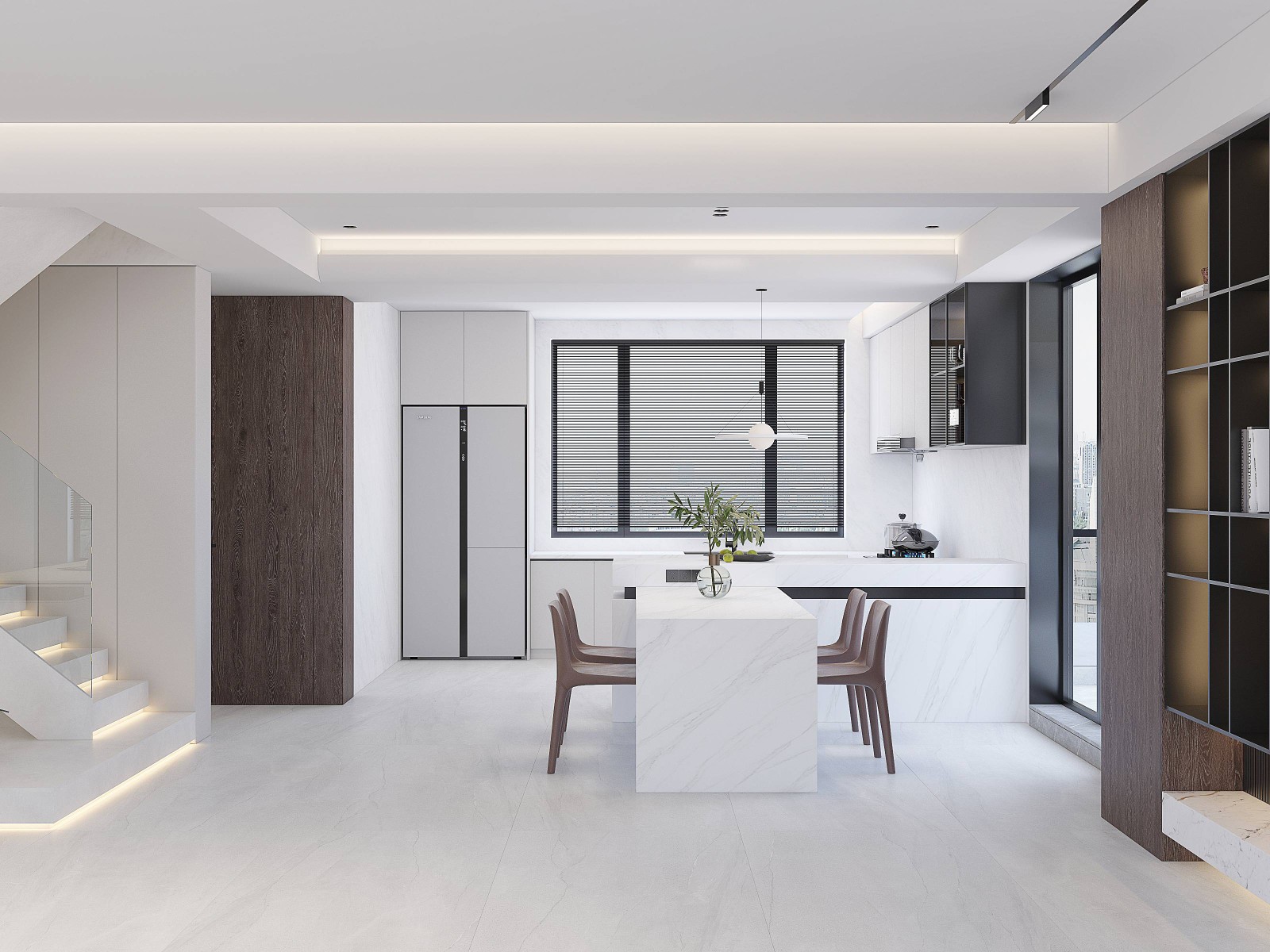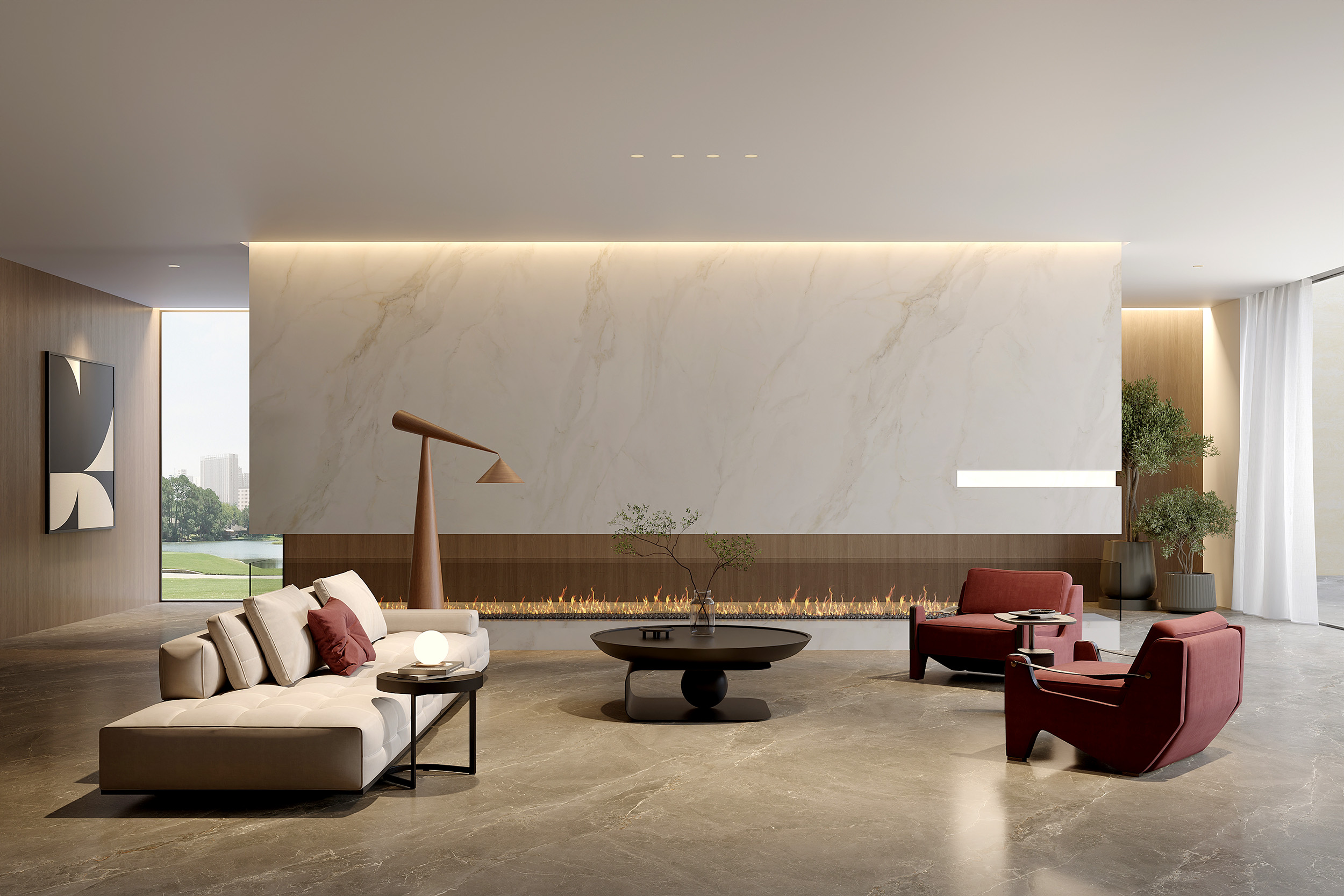Sintered stone countertops are a staple material for modern kitchen countertops, and their superior physical properties make them a popular choice for consumers.
A common question in daily use has garnered widespread attention: "Can you place a hot pot on a sintered stone countertop?"
This article will provide a detailed analysis of sintered stone countertops, including their materials, craftsmanship, thermal stability, and proper usage, to help consumers understand their heat resistance and safe usage practices.

What are sintered stone countertops?
Sintered stone countertops, also known as sintered quartz or artificial sintered stone, are made from a core material of natural mineral powder, quartz sand, mineral fillers, and resins, sintered at high temperatures or under high pressure. Sintered stone countertops have a smooth surface, high hardness, and are resistant to wear, acid, alkali, and scratches. Based on the different production processes, sintered stone countertops can be divided into two categories: traditional high-temperature sintered stone countertops and high-density pressed sintered stone countertops.
1. High-Temperature Sintering Process
The high-temperature sintering process is typically carried out at temperatures between 1200°C and 1400°C. The process melts and recrystallizes the mineral raw materials, creating a uniform, dense structure. This structure gives sintered stone worktops a natural stone-like surface texture while also providing exceptional hardness (Mohs hardness rating of 6-7).
2. High-Density Pressing Process
High-density pressed sintered stone countertops are formed by pressing powders under high pressure and then curing them with a resin or inorganic binder. While slightly less hard than all-mineral sintered stone, this type of countertop boasts a similarly dense physical structure and excellent wear and corrosion resistance.
Sintered stone worktops possess exceptional mechanical strength and density, which is one reason they are so popular in kitchens. However, hardness and density alone cannot fully address the issue of direct contact between hot objects and sintered stone worktops, so further analysis of their heat resistance is necessary.

Is sintered stone countertop heat resistant?
Sintered stone worktops offer certain advantages in heat resistance due to their unique material structure, but they are not completely immune to high temperatures. The heat resistance of sintered stone worktops is primarily determined by the following factors:
1. Mineral Composition
Sintered stone countertops are primarily composed of minerals such as quartz, feldspar, and mica. Quartz has a high heat resistance and can withstand transient temperatures exceeding 600°C. However, the resins or other organic binders contained in the countertop may begin to soften or decompose at temperatures between 200°C and 250°C. Therefore, the overall heat resistance of a sintered stone countertop must take into account the combination of mineral and organic components.
2. Countertop Thickness
Sintered stone worktops typically have a thickness between 15 and 30 mm. Thicker countertops conduct heat more slowly, minimizing the impact of surface temperature fluctuations on the countertop's interior. Therefore, thicker sintered stone worktops are relatively safe for short bursts of high temperatures, but this does not guarantee the long-term direct exposure to high-temperature cookware.
3. Surface Treatment
Sintered stone worktops typically have a polished or matte finish. Polished surfaces are smooth and flat, with a large heat contact area and high heat conduction efficiency. Matte or microporous surfaces may cause localized thermal stress concentrations. When exposed to high-temperature cookware, localized thermal expansion and contraction may lead to microcracks.
Taking these factors into account, sintered stone worktops offer certain advantages in heat resistance, but there is still a risk of thermal cracking, discoloration, or surface damage from short-term, direct contact with high temperatures.

What are the effects of hot pots on sintered stone countertops?
When a hot pot is placed directly on a sintered stone countertop, the following effects may occur:
1. Cracks Caused by Thermal Stress
Although the mineral structure of sintered stone countertops is dense, the localized heat generated by high-temperature cookware can cause uneven expansion of the countertop surface, resulting in thermal stress. If the thermal stress exceeds the material's tolerance limit, microcracks or localized damage may occur. Stress concentration is particularly likely to occur around edges or near pre-recorded holes.
2. Changes in Surface Gloss and Color
Prolonged contact with high-temperature cookware on a sintered stone countertop may cause slight discoloration or gloss changes. This is primarily related to the resin or pigment content in the countertop. While the mineral portion is heat-resistant, organic pigments can undergo microscopic decomposition or color change at high temperatures.
3. Contamination and Burn Marks
Sintered stone countertops have a smooth surface, but if the bottom of a pot is uncleaned or has residual oil, high temperatures can cause the oil to carbonize, leaving difficult-to-remove burn marks. While this damage does not affect the countertop's structure, it can affect its aesthetics and user experience.
Can hot pots be placed directly on sintered stone countertops?
Based on an analysis of the material and thermal properties of sintered stone countertops, authoritative recommendations are as follows:
1. Directly placing hot pots is not recommended
Although sintered stone worktops have high heat resistance, placing hot pots over 200°C directly on the countertop still carries risks, potentially causing cracks, discoloration, or surface burn marks.
2. Use a potholder or pot rack
To protect the sintered stone worktop, it is recommended to use a potholder, silicone mat, or metal pot rack to separate the hot pot from the countertop after cooking. This method effectively reduces heat conduction and prevents damage to the countertop from localized high temperatures.
3. Beware of Thermal Shock
Sintered stone worktops are susceptible to thermal shock when rapidly cooled or heated. For example, placing a hot pot directly off the heat on the countertop, or running cold water over a hot countertop, can cause cracks. Therefore, avoid alternating hot and cold temperatures.
4. Regular Maintenance
Sintered stone countertops should be kept clean during use to prevent carbonization of grease, sugar, or other flammable materials under high temperatures. Regularly inspect the countertop for microcracks and repair them promptly to extend its lifespan.

Analysis of Sintered Stone Countertop Heat Resistance
To more intuitively demonstrate the performance of sintered stone countertops in high-temperature environments, we provide the following technical data and comparison table.
Material Type | Main Ingredients | Surface Hardness (Mohs) | Thermal Expansion Coefficient (×10⁻⁶/°C) | High Temperature Resistance (°C) | Thermal Shock Sensitivity |
| Sintered Stone Countertop (Full Mineral) | Quartz, feldspar, mica | 6-7 | 7-9 | 600-800 | Medium-low |
| Sintered Stone Countertop (Resin-Bonded) | Quartz, feldspar, mica, resin | 5-6 | 8-10 | 200-250 | Medium-high |
| Granite Countertop | Quartz, feldspar, mica | 6-7 | 6-8 | 700-800 | Medium-low |
| Marble Countertop | Calcite | 3-4 | 4-6 | 500-600 | Medium-high |
| Pure Ceramic Countertop | Silicate ceramic | 7-8 | 2-5 | 1000+ | Low |
As shown in the table:
Full-mineral sintered stone worktops exhibit excellent high-temperature resistance, capable of withstanding short-term exposure to temperatures of 600°C to 800°C. However, thermal shock should still be a concern.
Resin-bonded sintered stone countertops' heat resistance is limited by the resin used. They typically soften or discolor at temperatures between 200°C and 250°C, posing a higher risk of direct contact with hot pots.
Compared to traditional natural stone (granite and marble), sintered stone countertops offer greater hardness and wear resistance, but their resin content makes them slightly more sensitive to localized high temperatures.
How can I buy marble slabs from WOWSLAB at competitive prices?
WOWSLAB, a professional supplier and manufacturer from China, provides high-quality Calacatta marble slabs and sintered stone slabs for residential and commercial projects. Our factory offers wholesale and bulk purchasing options, allowing buyers to enjoy low prices, discounts, and promotions.
We also provide customized slabs according to project specifications, ensuring each order meets aesthetic and functional requirements. Contact WOWSLAB!


